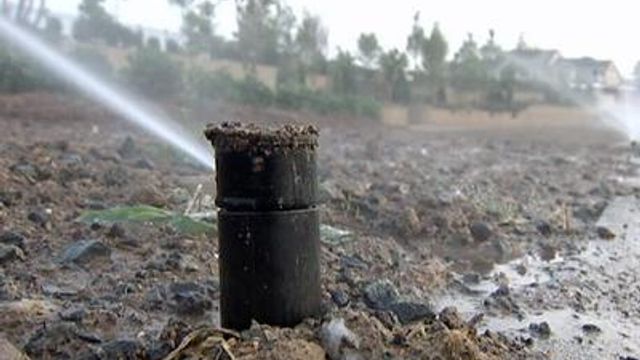Triangle inching toward driest year ever
The Raleigh-Durham International Airport has seen 26.87 inches of precipitation this year. If RDU receives less than 3.06 inches of rain by the end of December, this year will be the driest since 1887.
Posted — Updated"Even to a meteorologist and climatologist, it is kind of a surprise,” National Weather Service meteorologist Phil Badgett said.
The Raleigh-Durham International Airport has seen 26.87 inches of precipitation this year (through Oct. 22, 2009), according to the Raleigh Forecast Office. If RDU receives less than 3.06 inches of rain by the end of December, this year will be the driest since 1887, when record keeping began.
"This year, the rainfall amounts have just been lighter overall,” Badgett said.
An average year of rain is slightly more than 43 inches. In 1933, only 29.93 inches of rain fell. In 1921, 32.09 inches of rain were recorded. The third driest year was 1976, with 33.71 inches of rainfall.
"When you don't hear those kinds of things, you don't think about it until somebody runs the numbers and says, ‘My gosh, this could be one of the 10 driest years in history,’” WRAL Chief Meteorologist Greg Fishel said.
The drought that began Feb. 13, 2007, was the worst in North Carolina's record-keeping history. While some months were dry and hot, others were rainy.
“When you take that whole (2007) year, it actually didn't even get into the Top 10 (driest) list,” Badgett said.
Badgett said the 10th driest year was actually 1968, when 35.60 inches of rain fell.
Falls Lake, Raleigh's main water source, is down 4.5 feet. But despite low rainfall amounts, Ed Buchan, an environmental coordinator with the city's Public Utilities Department, said he is comfortable with the city’s water supply.
"Our water conservation pool, which is the water Raleigh has access to for drinking water, is in great shape,” he said.
Buchan said water conservation measures implemented during the drought have curbed usage, and water demand is expected to be down around 15 percent this year.
"It seems to be a message that is sticking – and that is good," Buchan said.
However, Badgett warned that drier conditions could eventually lead to a return of drought worries.
"If this dry weather continues all the way through the winter (and) we get into spring, we could set up a situation like we had in 2007," he said.
Copyright 2024 by Capitol Broadcasting Company. All rights reserved. This material may not be published, broadcast, rewritten or redistributed.





